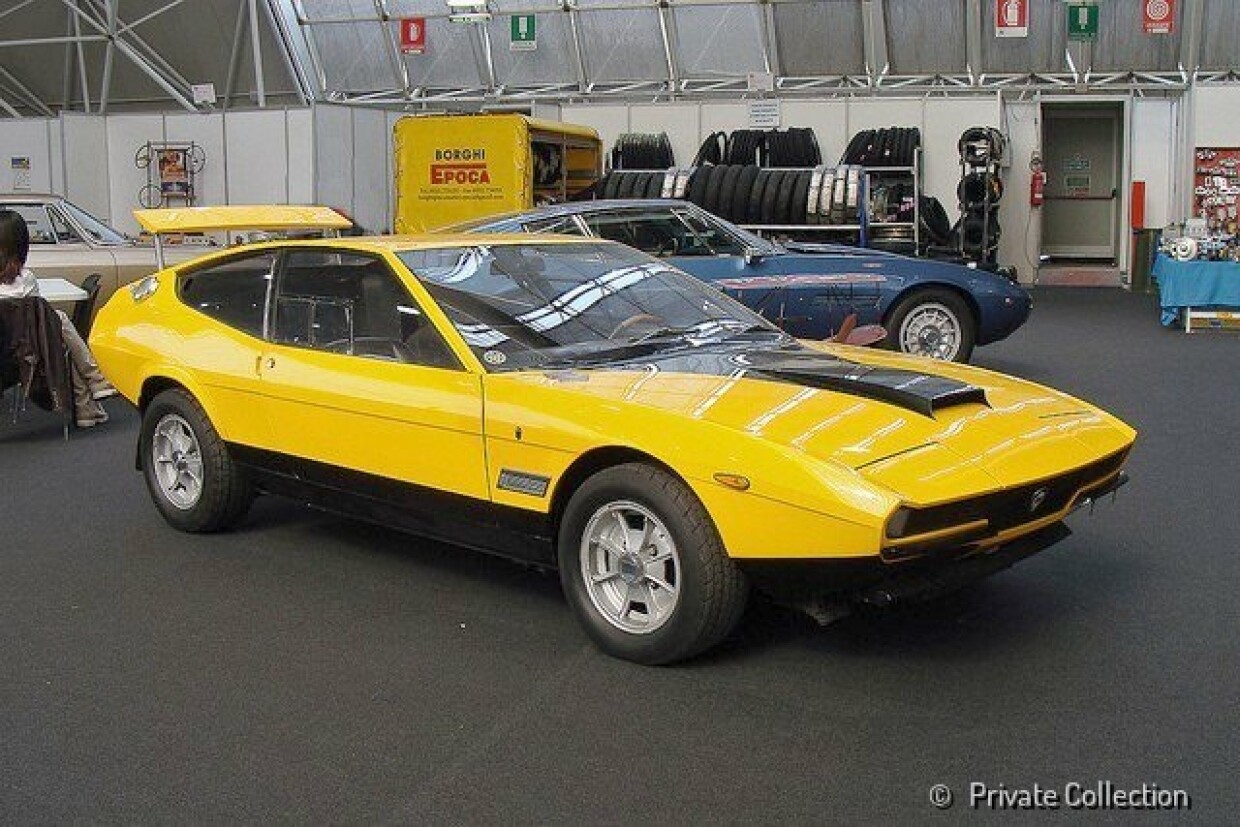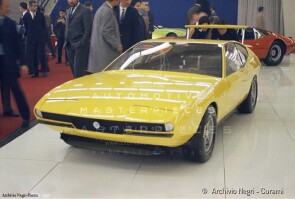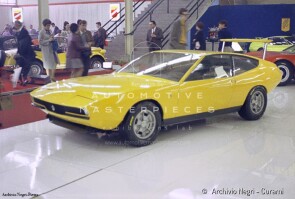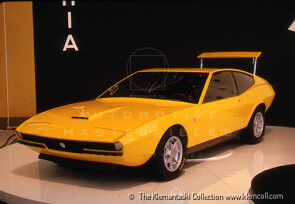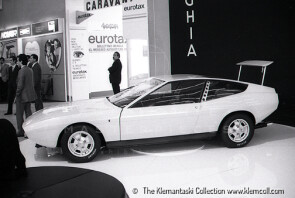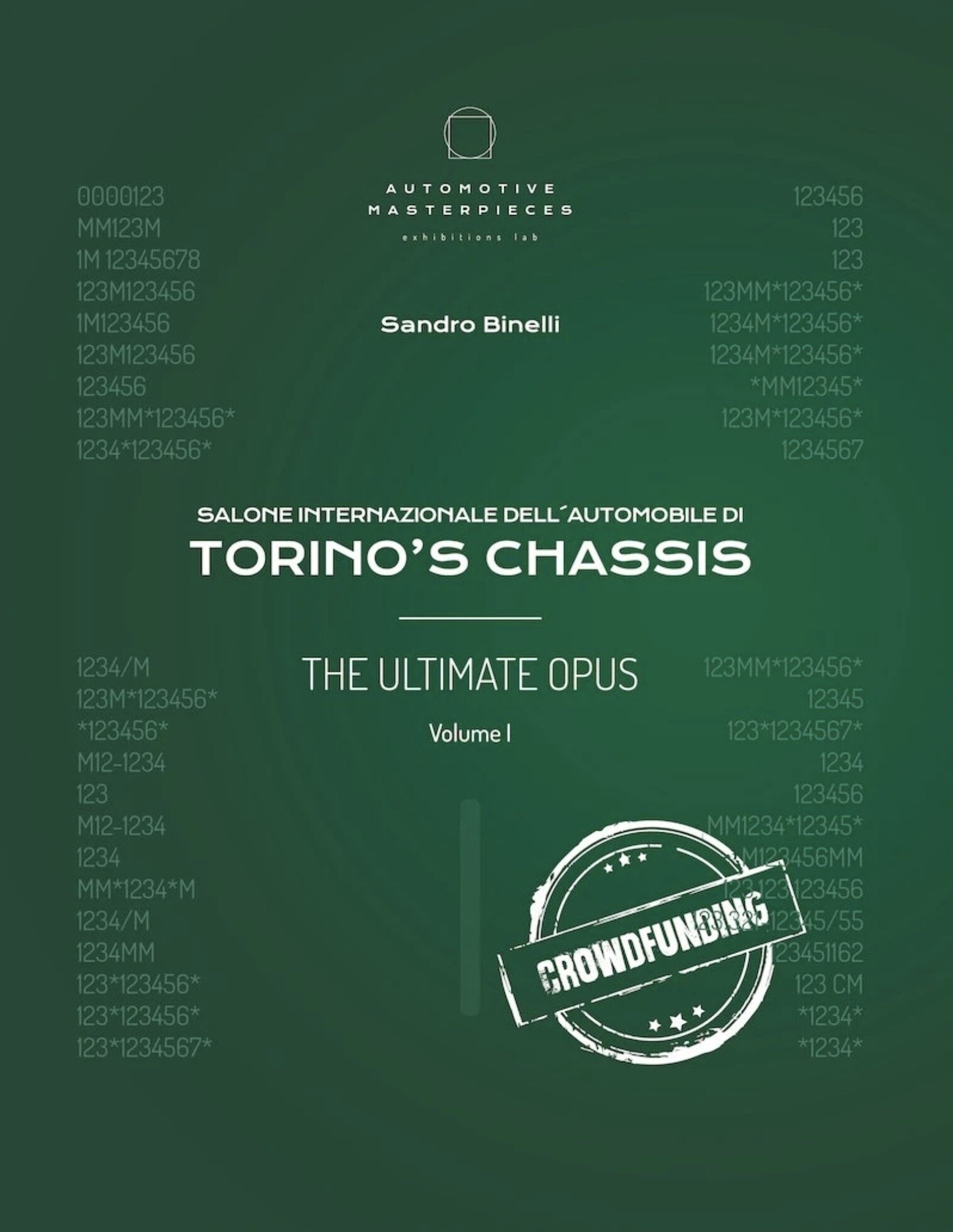
1969 Lancia Fulvia 1600 Competizione
ON/OFF
Why am I an Automotive Masterpiece?
Before Fiat’s takeover, Lancia introduced one of its last truly independent projects: the Fulvia. Presented at the 1963 Geneva Motor Show, the model embodied the brand’s philosophy of blending crisp Italian styling, advanced engineering, and agile performance in a compact yet refined package. Conceived under the guidance of technical director Antonio Fessia as a successor to the Appia, the Fulvia marked a decisive step forward in both design and technology. It adopted a front-wheel-drive layout at a time when most Italian competitors were still rear-driven, and it came standard with disc brakes on all four wheels – features that underscored its modern character. Power came from a narrow-angle DOHC V4 designed by Zaccone Mina, mounted at a 45-degree angle, a technical curiosity that contributed to the Fulvia’s distinct identity. Though production eventually surpassed 300,000 units, the model did not resolve Lancia’s financial difficulties, and the Fiat acquisition soon followed. The first version launched was a sober four-door berlina, but it was the coupé, introduced in 1965 and styled by Pietro Castagnero, that truly defined the Fulvia’s image. Low, sharp, and perfectly proportioned, the coupé reflected the elegance of Italian coachbuilding tradition while hinting at sporting intent. Over the years, Lancia enriched the coupé range with numerous trim levels and progressively more powerful engines, culminating in the legendary HF versions. The pinnacle was the 1.6 HF, unveiled in 1969: with 115 horsepower from its 1,584 cc engine, a five-speed gearbox, and a top speed around 180 km/h, it became the roadgoing counterpart to Lancia’s rally machines. The coupé also generated derivatives such as the Fulvia Sport, designed and built by Zagato, which combined lightweight construction with avant-garde lines. Yet it was the coupé in HF guise that secured the model’s lasting fame. Rallying soon became the Fulvia’s natural stage, where its precise handling and nimble balance made up for modest power. From the mid-1960s onward, the Fulvia scored important results in European rallies, consistently battling against more powerful rivals. Its greatest triumph came in 1972, when a Fulvia 1.6 HF driven by Sandro Munari clinched the International Championship for Manufacturers – a precursor to the World Rally Championship. That victory marked both the peak of the Fulvia’s career and a milestone in Lancia’s long rally tradition. Produced until 1976 in berlina, coupé, and Sport versions, the Fulvia closed an era for the company. It remains admired not only as an elegant, technically sophisticated car but also as a symbol of Lancia’s ingenuity before Fiat’s influence reshaped the brand. For enthusiasts, especially of the coupé, it stands as the last “true” Lancia – a car in which engineering originality, Italian style, and motorsport glory converged.
The Carrozzeria Ghia production was characterized above all by the high number of prototypes and one-off or very limited series cars. Founded in 1916 by Giacinto Ghia, the body shop had several owners and many important collaborations.
The Fulvia HF 1600 Competizione began to be conceived in the late 60s, when the Ghia included Giorgetto Giugiaro among its ranks, replaced in 1968 by Tom Tjaarda who will be responsible for the design of the car. In 1967 the Carrozzeria Ghia was bought by Alejandro de Tomaso, already the owner of the homonymous car factory. The Lancia Fulvia HF 1600 Competizione (Ghia), chassis no. 818540002279 is a one-off concept car presented at the 1969 Geneva International Motor Show and Salone Internazionale dell'Automobile di Torino. With the creation of this car, the Carrozzeria Ghia wanted to tackle the difficulty of harmonizing an aesthetic line with aerodynamic functionality and chose, as a starting point, the proven frame of the Lancia Fulvia 1600, which at that time had already achieved great successes. The chassis 818540002279 is part of the very rare "Fanalone" built for the special use of the "Reparto Corse" Lancia in only 20 examples. Most likely the chassis of this car is the latest produced in this series (the first being the chassis n°818540002259). Tjaarda and the Ghia style office, therefore, created a sober and functional bodywork for touring cars, with a very low and aerodynamic racing car line. To meet the need for maximum lightness, as this car was destined for racing and in the tradition of the style of the Ghia name, a bodywork was created that is a harmonious and geometric synthesis of the masses, with large glazed surfaces. The latter are all made of Plexiglas, with the exception of the special glass windshield, specially designed by the Belgian factory Glaverbel, to be able to reduce the thickness (3 mm) and thus obtain a lower weight. Taking advantage of the Formula 1 experience, but wanting to maintain a "double soul", as in a sleight of hand, the car transforms itself from a GT coupé into a racing car: it is sufficient, in fact, to press a button and from the rear it is raised a mechanically adjustable spoiler with a deporting profile, which increases the adhesion of the wheels proportionally to the increase in speed. The headlights are retractable and mechanically operated. The wheels are in magnesium alloy, with 13" rims and 7" channel, to the advantage of lightening the unsprung masses, stability and performance. The interior also has purely sporting characteristics: the dashboard, clearly inspired by aeronautics, with square instruments, follows the line already set externally. The seats are anatomically designed specifically to allow the rider and passenger to reach the end of long-distance races without getting tired. As for the mechanics, the frame of the Lancia Fulvia 1600 was subjected to small workings by the “Modenese” De Tomaso, who exploited its experience in formula races: all to obtain a lighter whole. The car was sold to a car collector and manufacturer in Turin who hold it for almost 20 years. In the early 2000s, it was purchased by an Italian collector living in Austria and was bought in 2012 by another Italian collector. The car underwent in 2014 to a complete restoration.
